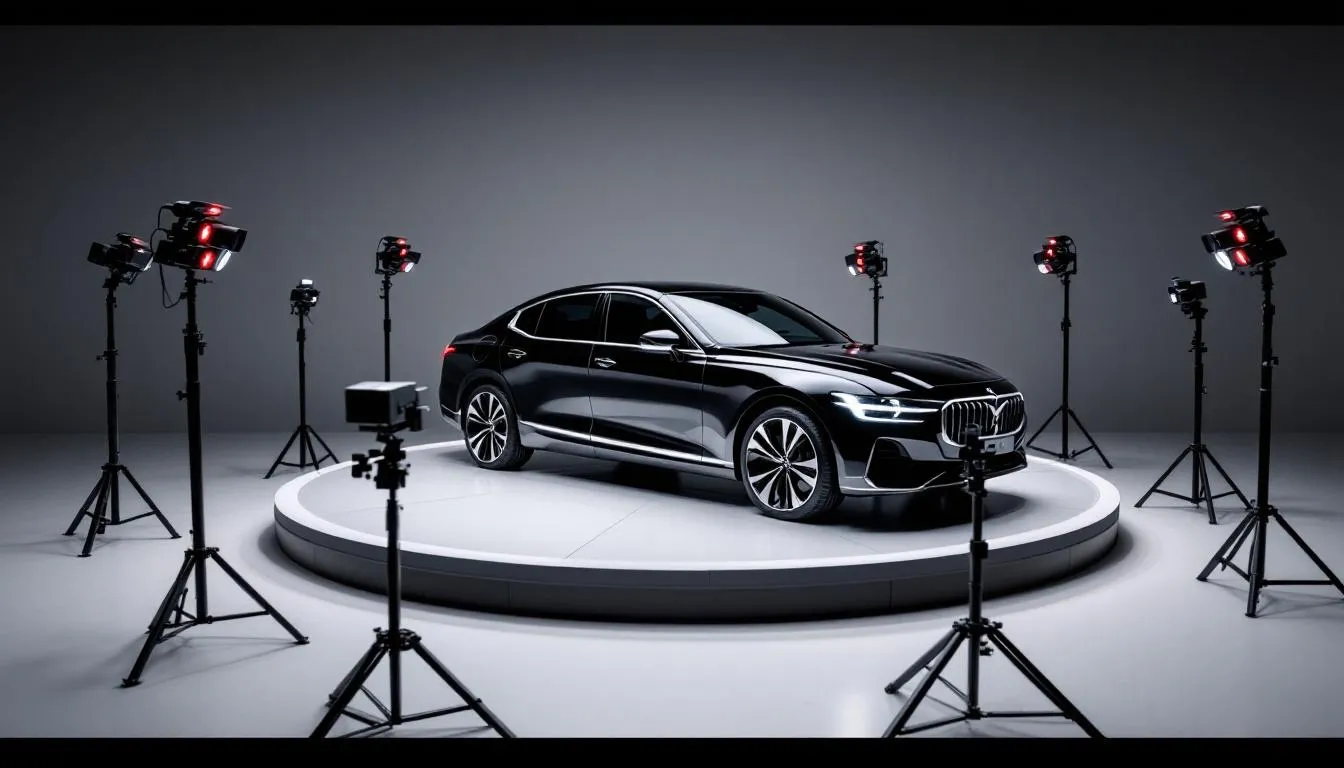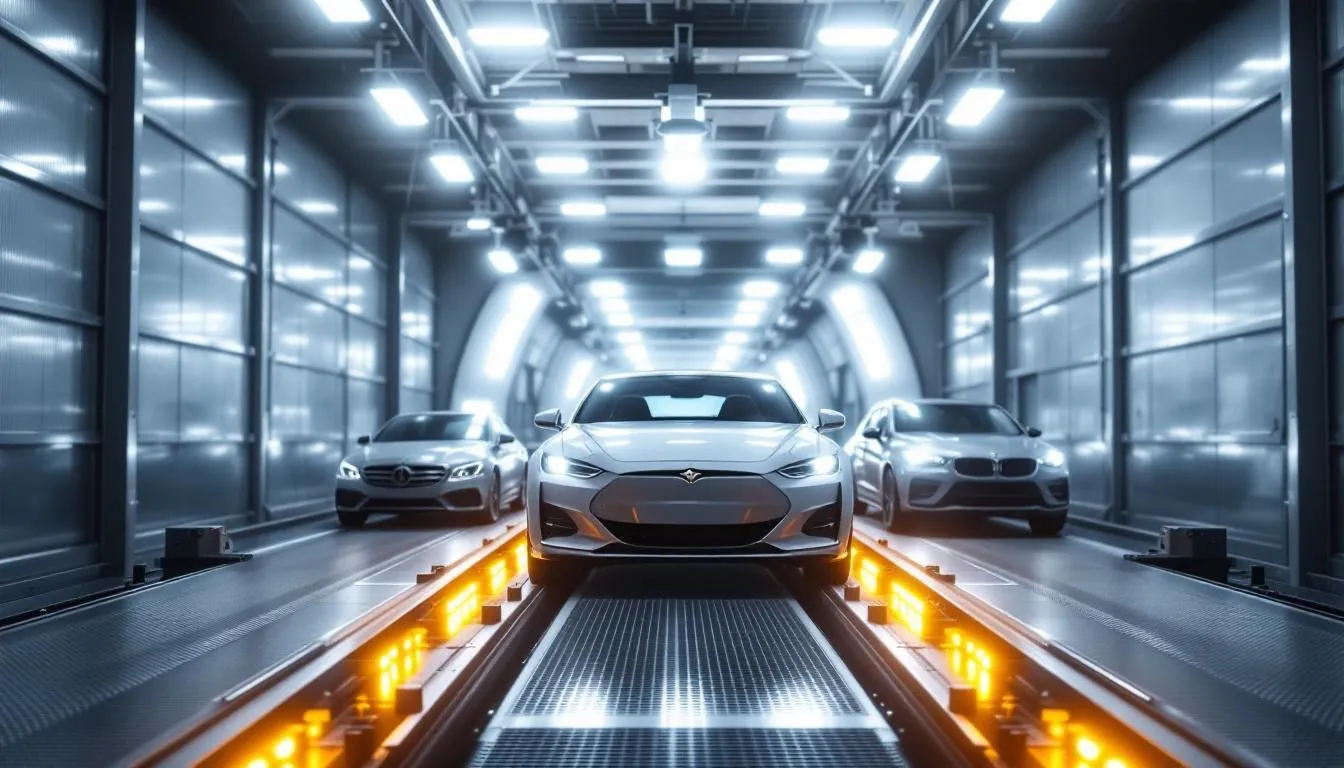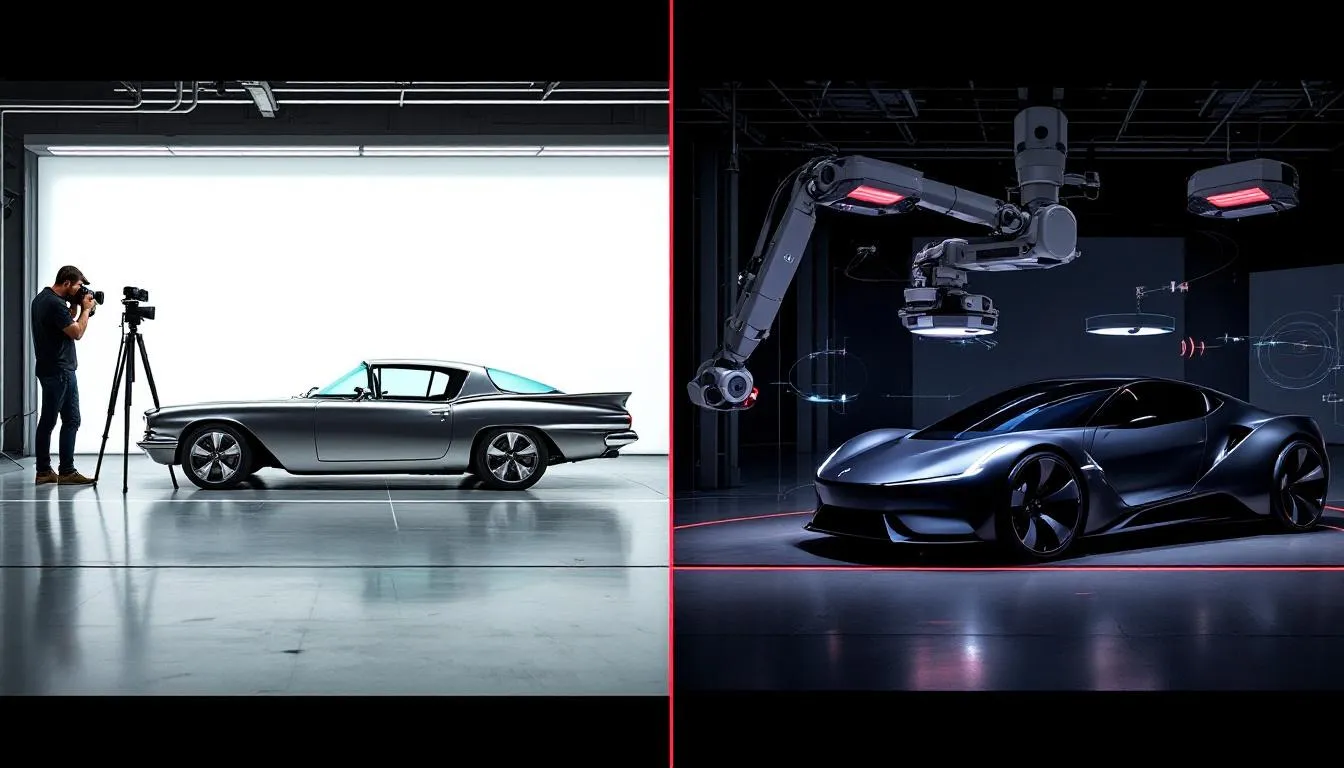The automotive industry is experiencing a digital transformation that extends far beyond electric vehicles and autonomous driving features. At the forefront of this revolution is car imaging technology, a sophisticated system that creates comprehensive visual documentation of vehicles through advanced capture methods and artificial intelligence analysis. This innovative approach replaces traditional static photography with interactive, high resolution representations that provide unprecedented detail and functionality for businesses across the automotive sector.
Unlike conventional methods that photograph vehicles using basic cameras, car imaging utilizes smart device technology and specialized hardware to create immersive 360-degree experiences. These systems can capture every angle, surface, and element of a vehicle in minutes rather than the long process traditionally required for thorough documentation. The ability to achieve consistent, high quality images at speed means businesses can save significant time while providing buyers and clients with a comprehensive view that was previously impossible through standard photography.

What is Car Imaging?
Car imaging represents a fundamental shift in how the automotive industry approaches vehicle documentation and analysis. This technology goes beyond simple photography to create interactive digital representations that capture every detail of a vehicle’s condition, features, and specifications. The process involves sophisticated imaging systems that can photograph vehicles from multiple angles, creating a seamless 360-degree experience that users can navigate anytime, anywhere.
The core of car imaging lies in its ability to combine high resolution image capture with artificial intelligence processing. When a vehicle is imaged through these advanced systems, the resulting data provides far more than visual documentation. AI algorithms analyze each captured frame to identify vehicle parts, detect damage, assess condition, and extract valuable information that supports decision-making across various applications.
Modern car imaging solutions are designed to address key challenges that have plagued the automotive industry for decades. Traditional photography methods often failed to capture the comprehensive view needed for remote inspections, online sales, and accurate condition assessments. These legacy approaches required significant manual labor, lacked consistency between different photographers, and couldn’t provide the level of detail necessary for confident remote purchasing decisions.
The technology integrates seamlessly with existing business workflows while dramatically improving efficiency. Rather than spending 30 minutes or more to manually photograph vehicles from various angles, car imaging systems can complete the entire capture process in under a minute. This dramatic reduction in processing time means businesses can handle higher volumes while maintaining superior quality standards.
Car Imaging Capture Methods
The evolution of car imaging has produced several distinct capture methodologies, each designed to meet specific business needs and operational constraints. These approaches range from mobile app-based solutions that leverage existing smart device infrastructure to fully automated tunnel systems capable of processing thousands of vehicles daily.
Mobile App-Based Imaging
Mobile app-based car imaging represents the most accessible entry point for businesses looking to implement advanced vehicle documentation. These solutions transform standard smartphones and tablets into powerful imaging devices capable of creating professional-grade 360-degree vehicle captures. The app guides users through a simple workflow, ensuring consistent results regardless of operator experience level.
The step-by-step process typically begins with the user positioning their smart device at a designated distance from the vehicle. The app provides real-time guidance for optimal framing and angle positioning, eliminating the guesswork that often leads to inconsistent traditional photography. As users move around the vehicle, the system captures high quality images at predetermined intervals, ensuring complete coverage of all exterior surfaces.
One significant advantage of mobile-based solutions is their offline functionality. Users can capture complete vehicle image sets without internet connectivity, with the app storing data locally until upload becomes possible. This feature proves essential for businesses operating in areas with limited network coverage or those preferring to batch-upload content during off-peak hours to save bandwidth costs.
The ease of use factor cannot be overstated. These applications are designed for untrained operators, with intuitive interfaces that require minimal learning time. Real-time feedback helps users identify and correct issues during the capture process, reducing the need for retakes and ensuring first-time quality. The workflow typically takes just a few minutes to complete, representing a massive efficiency gain over traditional photography methods.

Automated Tunnel Systems
At the opposite end of the spectrum from mobile solutions are automated tunnel systems, representing the pinnacle of car imaging efficiency for high-volume operations. These fixed imaging installations have revolutionized vehicle processing at major auction houses, with companies like Manheim deploying these systems since 2022 to handle their massive inventory requirements.
The power of automated tunnel systems lies in their ability to process vehicles with minimal human interaction. As a vehicle moves through the imaging tunnel on a conveyor system, dozens of strategically positioned cameras capture high resolution images from every conceivable angle. The entire process takes less than a minute from entry to exit, compared to the 30+ minutes required for manual imaging workflows.
These installations can process over one million vehicle image sets annually, making them ideal for auction houses, large dealerships, and fleet management operations. The consistency achieved through automation eliminates the variability inherent in manual photography, ensuring that every vehicle receives the same level of comprehensive documentation regardless of when or where it’s processed.
The integration with existing operational workflows represents another major advantage. Vehicles can flow seamlessly from inspection areas through imaging tunnels to staging areas without disruption to normal business operations. This seamless integration means businesses can implement advanced car imaging without redesigning their entire facility layout or operational procedures.
Applications Across Industries
The versatility of car imaging technology has created opportunities across multiple sectors within the automotive ecosystem. Each industry has discovered unique ways to leverage the comprehensive visual data and advanced analytics capabilities that these systems provide.
Dealership Applications
Automotive dealerships have embraced car imaging as a solution to the growing demand for transparent, detailed online vehicle presentations. Traditional static photographs often failed to build buyer confidence, particularly for remote customers who couldn’t physically inspect vehicles before purchase. Car imaging addresses this problem by creating interactive online showrooms that allow potential buyers to examine vehicles in extraordinary detail.
The technology enables virtual test drive experiences that extend beyond simple visual inspection. Buyers can explore both exterior and interior features, zoom in on specific areas of interest, and gain confidence in vehicle condition without visiting the dealership. This capability has proven particularly valuable for luxury vehicle sales, where buyers expect comprehensive documentation before making significant purchasing decisions.
Inventory management represents another significant application area. Dealerships can create detailed condition documentation for each vehicle, supporting accurate pricing decisions and warranty considerations. The ability to identify and document existing damage ensures transparent transactions and reduces post-sale disputes. Additionally, the standardized imaging process creates consistent presentation across all vehicles, enhancing the professional appearance of online listings.
The enhanced customer confidence generated by comprehensive visual documentation translates directly into improved conversion rates. Buyers who can thoroughly examine vehicles remotely are more likely to complete purchases, reducing the number of physical visits required and streamlining the sales process. This efficiency gain allows sales staff to focus on higher-value activities while the technology handles the detailed presentation requirements.
Auction House Implementation
Vehicle auction houses have emerged as early adopters of car imaging technology, driven by the need to support remote bidding and reduce physical inspection requirements. The traditional auction model required buyers to physically visit auction locations to inspect vehicles, limiting participation and creating logistical challenges for geographically dispersed buyers.
Car imaging has fundamentally changed this dynamic by enabling comprehensive remote vehicle evaluation. Bidders can now examine vehicles in detail from anywhere in the world, expanding the potential buyer base for each auction lot. This increased participation typically translates into higher sale prices, benefiting both auction houses and consignors.
The standardized imaging quality across all auction locations ensures consistent buyer experiences regardless of which facility handles a particular vehicle. This consistency builds trust in the auction process and reduces the risk perception associated with remote bidding. Buyers can develop confidence in their ability to accurately assess vehicle condition through the imaging system, leading to more competitive bidding.
Operational efficiency gains extend beyond the imaging process itself. Reduced physical inspection requirements mean fewer people need access to vehicles, improving security and reducing handling damage risks. The faster lot processing enabled by automated imaging systems allows auction houses to handle larger volumes while maintaining quality standards.

Advanced Technologies in Car Imaging
The integration of artificial intelligence and advanced imaging technologies has elevated car imaging from simple documentation to sophisticated analysis platforms. These technological advances enable automated damage detection, thermal diagnostics, and enhanced image processing that provides unprecedented insights into vehicle condition and performance.
AI-Powered Damage Detection
Artificial intelligence algorithms trained on millions of vehicle images can now automatically identify and classify damage with remarkable accuracy. These systems analyze captured images to detect dents, scratches, paint damage, and other condition issues that might affect vehicle value or safety. The automated nature of this analysis ensures consistent evaluation standards across all vehicles, eliminating the subjectivity inherent in human inspection processes.
The classification capabilities extend beyond simple damage identification to include severity assessment and repair cost estimation. Advanced AI models can distinguish between minor cosmetic issues and significant structural damage, providing detailed analysis that supports accurate pricing decisions. This level of automated assessment proves particularly valuable for insurance applications, where rapid, accurate damage evaluation directly impacts claims processing efficiency.
Location mapping represents another sophisticated feature of AI-powered damage detection. The system can identify precisely where damage occurs on a vehicle and create detailed diagrams showing affected areas. This mapping capability supports repair planning and ensures that all identified issues are addressed during restoration processes.
Expected deployment timelines for major auction houses indicate that comprehensive AI damage detection will become standard by 2024. This widespread adoption reflects the technology’s maturity and the significant business value it provides through improved efficiency and accuracy.
Thermal Imaging for Diagnostics
The integration of thermal imaging cameras into car imaging systems opens new possibilities for mechanical and electrical system diagnosis. These specialized cameras can detect heat signatures that indicate electrical component performance, resistance issues in wiring, and engine performance characteristics that aren’t visible through conventional photography.
Heat signature analysis proves particularly valuable for electrical component inspection, where thermal patterns can reveal failing components before they cause system failures. This predictive capability allows for proactive maintenance planning and reduces the risk of unexpected breakdowns. The ability to identify electrical hotspots during routine imaging provides insights that traditional multimeter testing might miss.
Engine performance evaluation through thermal patterns offers another diagnostic dimension. Temperature variations across engine components can indicate issues with cooling system performance, combustion efficiency, and mechanical wear patterns. This information supports more accurate condition assessment and helps predict maintenance requirements.
The reduction in diagnostic time compared to traditional testing methods represents a significant efficiency gain. Rather than connecting test equipment to various vehicle systems, thermal imaging can identify potential problems in seconds during the normal imaging process. This speed advantage makes comprehensive system evaluation practical for high-volume operations.
Benefits and ROI of Car Imaging
The business case for car imaging technology rests on measurable improvements in operational efficiency, customer satisfaction, and cost reduction. Organizations implementing these systems consistently report significant returns on investment through reduced labor costs, improved processing speed, and enhanced customer confidence.
Cost Savings Analysis
The most immediate and measurable benefit comes from labor reduction in the imaging process. Traditional vehicle photography typically required 30 minutes or more per vehicle, involving skilled photographers who understood proper angles, lighting, and composition. Car imaging systems reduce this time investment to under one minute per vehicle while achieving superior consistency and quality.
This efficiency improvement scales dramatically in high-volume operations. An auction house processing 1,000 vehicles weekly could save over 480 hours of labor time by implementing automated car imaging. At standard labor rates, this translates to substantial cost savings that typically justify system investment within the first year of operation.
The minimized human interaction requirements extend beyond direct labor savings to include reduced training costs, lower error rates, and improved workplace safety. Automated systems eliminate the need for personnel to work closely around moving vehicles, reducing accident risks and insurance liabilities.
Decreased need for physical vehicle inspections provides additional cost benefits, particularly for remote buyers who previously required expensive travel to evaluation locations. The comprehensive visual documentation enables confident remote decision-making, reducing the costs associated with traditional inspection processes while expanding market reach.
Streamlined inventory management and processing efficiency create additional value through faster time-to-market for vehicle sales. Vehicles can move through documentation processes more quickly, reducing holding costs and improving cash flow for dealerships and auction houses.

Technical Infrastructure Requirements
Successful car imaging implementation requires careful consideration of hardware specifications, software integration capabilities, and network infrastructure requirements. Organizations must ensure their technical foundation can support the demanding requirements of high resolution image capture, processing, and storage.
Hardware specifications vary significantly depending on the chosen capture methodology. Mobile app-based solutions leverage existing smart device infrastructure but may require additional lighting equipment and positioning aids to ensure consistent quality. Automated tunnel systems demand substantial capital investment in specialized cameras, conveyor systems, and environmental controls.
Camera quality represents a critical element in system performance. High resolution sensors capable of capturing detailed images under varying lighting conditions ensure that the resulting documentation meets professional standards. Multiple cameras positioned at strategic angles provide the comprehensive coverage necessary for complete vehicle documentation.
Software integration with existing content management systems often determines implementation success. Car imaging solutions must seamlessly connect with dealer management systems, auction platforms, and customer-facing websites to maximize value. APIs and data export capabilities ensure that captured images and analysis data can flow efficiently through existing business workflows.
Network bandwidth requirements can be substantial, particularly for organizations processing large volumes of high resolution images. Upload speeds, storage capacity, and content delivery network capabilities all impact system performance and user experience. Organizations must evaluate their current network infrastructure and plan for capacity expansion as needed.
Storage solutions for high resolution image data management require careful planning for both immediate access and long-term archival needs. The volume of data generated by comprehensive vehicle imaging can quickly overwhelm unprepared storage systems. Cloud-based solutions often provide the scalability and reliability necessary for enterprise-level implementations.
Future Trends in Car Imaging
The rapid evolution of car imaging technology continues to open new possibilities for enhanced functionality and expanded applications. Emerging trends point toward integration with augmented reality, real-time operational monitoring, and blockchain-based authentication systems.
Integration with augmented reality promises to transform how buyers interact with vehicle documentation. Rather than simply viewing images on screens, potential buyers could use AR applications to examine vehicles in their own space, visualizing size, color, and features in real-world contexts. This technology could revolutionize remote vehicle sales by providing experiences that closely approximate physical inspection.
Real-time damage assessment during vehicle operation represents another emerging application. Advanced imaging systems could monitor vehicle condition continuously, identifying new damage as it occurs and alerting operators to maintenance needs. This capability would prove particularly valuable for fleet management applications where vehicle condition directly impacts operational costs.
Blockchain technology offers solutions for secure image authentication, addressing concerns about image manipulation and documentation integrity. Immutable records of when and how images were captured could provide the trust necessary for high-value transactions based on remote documentation.
Advanced AI models for predictive maintenance recommendations continue to evolve, promising even more sophisticated analysis capabilities. These systems could identify patterns in vehicle condition that predict future maintenance needs, enabling proactive service planning that reduces downtime and extends vehicle life.
The convergence of these technologies suggests that car imaging will continue expanding beyond documentation to become a comprehensive vehicle intelligence platform. This evolution will create new business opportunities while further improving the efficiency and effectiveness of automotive operations across all sectors.
Car imaging technology has already transformed how the automotive industry approaches vehicle documentation, inspection, and sales. As the technology continues advancing, organizations that embrace these innovations position themselves for continued success in an increasingly digital marketplace. The combination of improved efficiency, enhanced customer experience, and measurable cost savings makes car imaging an essential tool for modern automotive businesses ready to compete in tomorrow’s market.




